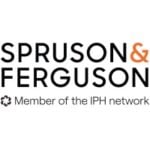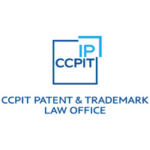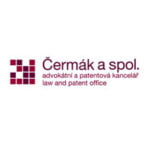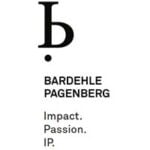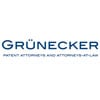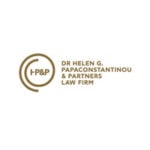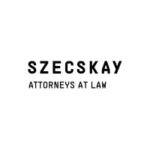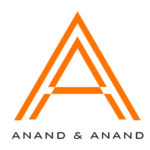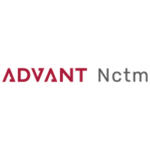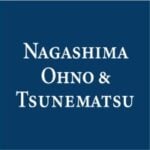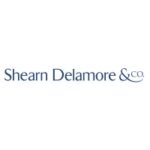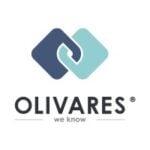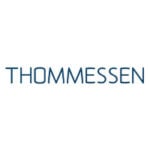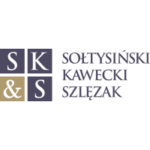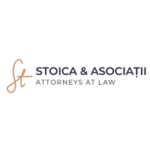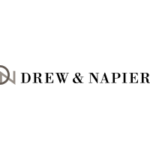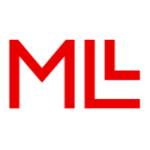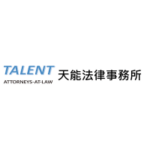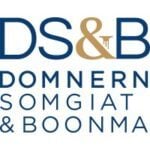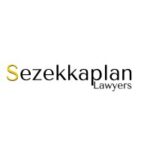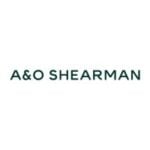-
What is the forum for the conduct of patent litigation?
Korea has a bifurcated system in which infringement and invalidation are decided in separate proceedings and at different forums. Patent infringement actions seeking either damages or injunctive relief in Korea can be brought in six specialized district courts designated to handle IP cases, including Seoul Central, Daejeon, Daegu, Busan, Gwangju, and Suwon District Courts. Seoul Central District Court is by far the most popular venue and handles a majority of the patent infringement actions in Korea. In the court, a patent infringement action is reviewed by three judges with technical advisors, who are either current KIPO officials dispatched to the district courts on 2-year terms or appointed by courts to aid the judges with technology related issues in the litigation. Patent invalidation actions are filed at the Intellectual Property Trial and Appeal Board (“IPTAB”) under the Korean Intellectual Property Office (“KIPO”), and are usually reviewed by a panel of three trial examiners but the panel may be enlarged to five examiners for cases with significant precedential implications. The district court has the authority to review both the infringement and invalidity issues. Although it does not rule on the validity of the patents, per se, the underlying infringement action may be (i) dismissed if the court finds that the patent is clearly invalid, or (ii) stayed until the decision from the IPTAB if there is a pending invalidity action.
-
What is the typical timeline and form of first instance patent litigation proceedings?
A patent infringement action generally takes about 12-24 months for the district court to render a decision, but it may vary depending on the complexity and significance of the case. From 2018 to 2022, on average, it took an average of about 581 days for a district court to render a decision in a patent infringement case) Unlike other jurisdictions, e.g. the U.S., where the litigation is divided into extensive pre-trial process, including discovery, and eventual trial by factfinder(s), Korean civil litigation usually consists of multiple hearings every one or two months until the panel is satisfied with the records and ready to rule on the issues, where relevant evidence and supporting briefs usually being submitted prior to each hearing. During the hearing, the panel may conduct fact/expert witness examination or listen to oral arguments from the parties’ counsel regarding issues of the panel’s interest. A patent invalidation action before the IPTAB is usually faster than the court proceeding, lasting about 9 to 16 months, but it can be put on an expedited track under certain circumstance, e.g. a concurrently pending infringement action, which may reduce the timeline to 6 to 12 months. If both the infringement and invalidation actions are pending before the district court and the IPTAB on parallel tracks, either party may request that the infringement action be stayed pending the IPTAB’s determination on the invalidation action.
-
Can interim and final decisions in patent cases be appealed?
Interim decisions are rarely rendered in Korean patent infringement or invalidity cases. All appeals of the final decisions of the district courts in infringement actions and the decisions from the invalidation actions before the IPTAB are appealed to the Intellectual Property High Court (“IP High Court”), a specialized court dedicated to patent related matter similar to the US Court of Appeals for the Federal Circuit. The appeals are filed as of right, with no permission required. The IP High Court reviews all issues, including both legal and factual issues, on a de novo basis and additional evidence and arguments are allowed. The IP High Court usually holds one or two oral hearings, and generally renders a decision in about 6 to 12 months, but if additional facts and legal theories are presented, the time may be extended significantly. The decision of the IP High Court may be appealed to the Supreme Court, but only the legal issues are reviewed by a panel of four justices with assistance from research judges, who are experienced judges with special expertise in the given legal field, and technical advisors. Unless the case is an exceptional one, the Supreme Court will usually rule based on the briefing without holding an oral hearing. Although the appeal to the Supreme Court is of right, with no permission required, most of the appeals are dismissed summarily within about four months after receiving the case records citing lack of sufficient legal basis to conduct a full review, which can generally take two years or longer to rule on.
-
Which acts constitute direct patent infringement?
Direct infringement under the Korean patent law is an unauthorized “practice” of the patented invention, and under Patent Act Article 2, “practice” of an invention of a product is defined as manufacturing, using, assigning (i.e., selling), leasing, or importing the product or offering to assign or lease the product (including displaying the product for the purpose of assigning or lease). Moreover, “practice” of an invention of a process of manufacturing a product under the same Article is defined as using, assigning, leasing, or importing the product manufactured by the process or offering to assign or lease the product.
-
Do the concepts of indirect patent infringement or contributory infringement exist? If, so what are the elements of such forms of infringement?
Korean Patent Act Article 127 provides that conducting either of the following activities for business purposes shall be deemed infringement of a patent or an exclusive license: (1) if the patent is for the invention of a product: Manufacturing, assigning, leasing, or importing the thing used exclusively for manufacturing such product or offering to assign or lease such thing; (2) If the patent is for the invention of a process: Manufacturing, assigning, leasing, or importing a thing used exclusively for practicing the process or offering to assign or lease the thing. This is similar to the contributory infringement concept, although the text does not label the proscribed activities in terms of indirect or contributory infringement. The Korean Patent Act does not provide for an induced infringement cause of action, but inducement may be asserted based on tort-based concept in civil laws
-
How is the scope of protection of patent claims construed?
The scope of protection of patent claims are construed using the limitations stated in each patent claim. In building on the basic principle, the Supreme Court of Korea held that the claim language should be construed in an objective and reasonable manner based on its common meaning, but in a case where the technical meaning of the patented invention cannot be specifically understood from the languages of the claims alone, the detailed description of the invention and drawings shall be taken into consideration. The doctrine of equivalents has been generally recognized in Korea. According to the decisions of Korean courts, even if all elements of a claim are not literally present in a product or a process, a finding of patent infringement is possible under the doctrine of equivalents if certain requirements are met, including (1) the accused product or process uses the same principle to solve the same problems as the inventions of the patent; (2) the accused product or process uses an equivalent element or elements to achieve substantially the same effect as the corresponding claim element; (3) the equivalent element is obvious to a person of ordinary skill in the relevant art such that it is easily conceivable; (4) the accused product or process utilizes the prior art or what would have been obvious for the person of ordinary skill in the art to devise using the prior art; and (5) the equivalent element was not purposefully excluded from the patent claims during prosecution of the patent. The plaintiff has the burden to allege and prove the first three elements, while the defendant has the burden to allege and prove the next two elements.
-
What are the key defences to patent infringement?
Key general defences to patent infringement include (1) non-infringement (including license by law or contract) and (2) invalidity. Particular defences to patent infringement also include (1) statute of limitation with the limitation period of ten years from the date on which the action accrued, or three years from the date the claimant became aware of the damages and the identity of the infringer, (2) patent exhaustion recognized by the Korean courts as the principle of exhaustion of the patent right, and (3) conversion of an invalid patent into a utility model by finding an issued patent invalid though an invalidity proceeding.
-
What are the key grounds of patent invalidity?
The Korean Patent Act Article 133 provides the key grounds of patent invalidity, which include lack of industrial applicability, novelty/inventiveness, inadequacy of written description or lack of support/clarity.
-
How is prior art considered in the context of an invalidity action?
Under the Korean patent law, prior art includes the following: (1) an invention publicly known or practiced in Korea or in a foreign country prior to the filing of the patent application at issue and (2) an invention published in a publication distributed in Korea or in a foreign country or an invention disclosed to the public via Internet prior to the filing of the patent application at issue may be cited for lack of novelty and inventiveness, while prior art that is (3) an invention described in the specification of a patent application filed prior to and published after the filing of the patent application at issue may be cited only in terms of lack of novelty. As for asserting lack of inventiveness, prior art can be combined, and the inventiveness of the invention would be denied if the references present a suggestion or motivation that a combination of the references could lead to the claimed invention or a person of ordinary skill in the art can easily reach the combination.
-
Can a patentee seek to amend a patent that is in the midst of patent litigation?
A patentee can seek to amend a patent, even in the midst of patent litigation, by filing either a correction trial if no invalidation action is pending or a request for correction as a part of the ongoing invalidation action with the IPTAB only to (i) narrow the scope of the claims, (ii) correct obvious errors or (iii) clarify ambiguous languages. The patentee can file for a correction trial before the IPTAB to amend the claims or specification of an issued patent, and if the civil main action for infringement is pending, the court may stay the infringement action until a decision in the correction trial is ordered. A third party may submit an opinion and evidence as to the propriety of such correction, but it cannot partake in the proceeding as a party. If a patent invalidation action is in progress before the IPTAB, however, a correction trial cannot be filed; instead the patentee may file a request for correction to amend the patent as part of the invalidation action, and once amended, the correction may be challenged by the petitioner of invalidity action.
-
Is some form of patent term extension available?
Yes, if there is a statutory requirement for permission or registration to practice a patented invention, and complying with the requirement takes a long time, which is often the case in the field of pharmaceuticals or finished/raw agrochemical product industry, the term of the patent may be extended once for an additional period of up to five years to compensate for the period in which the patented invention could not be practiced, unless the delay is attributable to the patentee.
-
How are technical matters considered in patent litigation proceedings?
Technical matters are considered the same as any other factual issue involved in the case. As noted above, technical advisors, who are KIPO officials or court-appointed technical experts, assist judges on the technical aspects of the patent at issue. Technical advisors usually hold a technology explanatory session for such purpose. Court appointed experts are independent and neutral and provide its technical opinion on the scope of the patent and infringement allegations. In addition to the court appointed experts, each side will usually proffer expert witnesses on technical matters to offer expert testimony regarding the contented issues.
-
Is some form of discovery/disclosure and/or court-mandated evidence seizure/protection (e.g. saisie-contrefaçon) available, either before the commencement of or during patent litigation proceedings?
The discovery in Korea is relatively limited and even the limited discovery available in patent litigation is conducted entirely by and under the supervision of the court. The Civil Procedure Act provides that a party may petition the court to order production of certain documents from the other party or a third party, inspection of the other party’s or a third party’s sites, and examination of witness and parties by summons. In addition to the discovery measures provided in the Civil Procedure Act, Article 132 of the Patent Act also specifies that the court may, upon request by a party, order the other party to submit “material necessary for providing the relevant infringement or calculating the amount of losses caused by the relevant infringement.” If the party controlling such materials refuses to submit the materials based on a “reasonable ground” (e.g., the material is confidential information or trade secret) to do so, the court can inspect the materials in camera to determine whether the cited ground is indeed reasonable. Since the amendment of the Patent Act in 2016, asserting requested material is trade secret will not constitute a “reasonable ground” if such material is necessary for providing infringement or calculating the amount of losses and the court shall protect the trade secret by limiting the access to and scope of such trade secret. If a party refuses to comply with the court’s order, the court may deem the other party’s claim regarding the material is true, essentially allowing adverse inference against the non-compliant party. The parties will usually present their expert witnesses on technical matters, but the court may request or appoint experts for their opinion by providing affidavits or testimony. In addition to the court-supervised discovery, there has been active discussion as to introduction of a discovery process that is similar to the ones adopted in other countries, such as the U.S.
-
Are there procedures available which would assist a patentee to determine infringement of a process patent?
For a process patent, if a patentee shows that a product manufactured by the accused infringer is identical to that manufactured by the patented process, the presumption that the accused infringer practiced the patented process is applied. The presumption, however, is rebuttable upon the accused infringer’s showing that the product (1) was publicly known or practiced in Korea prior to the filing date of the patented process, or (2) described in a publication published in Korea or other countries prior to the filing date of the patented process or (3) was not manufactured using the patented process. Additionally, the Patent Act, Article 126-2, added in 2019 the requirement that once the plaintiff alleges the defendant of engaging in a specific type of behaviour (for proving infringement of a process patent claim), if the defendant denies engaging in such behaviour, it shall present the actual behaviour the defendant engages in, thereby shifting the burden to the defendant. In reality, however, because the Article 126-2 is a relatively new addition to the law, its practical implication in the actual litigation is not yet known.
-
Are there established mechanisms to protect confidential information required to be disclosed/exchanged in the course of patent litigation (e.g. confidentiality clubs)?
For all patent related proceedings, either party to the litigation may apply for the court to enter a protective order prohibiting the parties from disclosing confidential information to those outside of the litigation. In addition, the party requested to produce certain evidence by the requesting party may refuse such production and ask the court to review the information without disclosing the content of the document to the requesting party and the court will review the document in camera to determine whether it can be withheld from production.
-
Is there a system of post-grant opposition proceedings? If so, how does this system interact with the patent litigation system?
As a form of post-grant opposition, a patent cancellation action is available for the patents registered on or after 17 March 2017. Unlike the invalidation action, grounds for cancellation are limited to prior art invalidity grounds (for example, lack of novelty or inventiveness, double patenting) based on written publications. A cancellation procedure must be filed within 6 months from patent publication and does not involve petitioner after filing a petition.
-
To what extent are decisions from other fora/jurisdictions relevant or influential, and if so, are there any particularly influential fora/jurisdictions?
Courts have full discretion whether to consider the decisions from foreign jurisdiction and how much weight to give to them. Due to the similarity of legal system, the decisions of courts in Japan and Germany seem to be somewhat influential when certain issues of first impression are considered by the courts, as well as those of the U.S. courts.
-
How does a court determine whether it has jurisdiction to hear a patent action?
To determine the jurisdiction, the courts of Korea consider whether a party or a case is substantially related to Korea pursuant to the Act on Private International Law of Korea (the “Private International Law”). Since its recent amendment on January 4, 2022 and enforcement from July 5, 2022, the Private International Law provides a more specified standard to determine the general rule of substantial relevance and newly established special jurisdiction provisions applicable to specific cases and types of cases.
Through the amendment, intellectual property rights became an independent chapter (Chapter 5) in the amended Private International Law, and two articles (Articles 38 and 39) concerning the international jurisdiction of cases involving issues related to intellectual property rights have been added.
Newly established provisions in Chapter 1 General Provisions include provisions regarding (i) general jurisdiction (Article 3) over the place of a person’s residence; (ii) special jurisdiction over the place where a business office is located or the business operates (Article 4); (iii) special jurisdiction over the location of a property (Article 5); (iv) jurisdiction over related cases (Article 6); (v) jurisdiction over counterclaims (Article 7); (vi) jurisdiction agreed between parties (Article 8); (vii) jurisdiction where a defendant responds to a lawsuit (Article 9); and (viii) an exclusive jurisdiction (Article 10). These provisions are applicable to international IP lawsuits.
Pursuant to the amended Article 10(1)4, where an intellectual property right that can be created by registration or deposition with KIPO has been registered or applied for registration in Korea, the international jurisdiction of the courts in Korea is recognized for litigations where the issues involve establishment, validity or expiration of the said intellectual property right.
Article 10(1)4 of the amended Private International Law reflects the Supreme Court’s intention in its decisions: the Supreme Court of Korea determined that “generally an exclusive jurisdiction of a lawsuit seeking judgment on the validity or cancellation of a patent right is the court in a country where such a patent right is registered or filed for registration because a patent right is a right granted under the laws of the country in which the patent is registered, and a court in Korea cannot determine the validity of another country’s grant of a patent right.” (Supreme Court Decision 2009Da19093 Dated Apr. 27, 2011). The Supreme Court has similarly determined on a trademark case (Supreme Court en banc 2015Hu1454 Dated June 21, 2018).
Under Article 38(1) of the amended Private International Law, Korean courts have a valid jurisdiction over litigation involving a contract for transfer of intellectual property rights, establishment of security rights and licenses for the use of intellectual property, if the intellectual property right is protected, used or enforced in Korea (Article 38(1)1) or such intellectual property right is registered in Korea (Article 38(1)2).
Article 38(1) of the amended Private International Law provides that the international jurisdiction of the Korean court is recognized if (i) the infringing act occurred in Korea (Article 38(1)1), (ii) the result of the infringing act occurred in Korea (Article 38(1)2) or (iii) the infringing act targeted an injury in Korea (Article 38(1)3). An exception to this provision, as provided in Article 39(3), is that if the major infringement of an intellectual property right occurred in Korea, the Korean courts have a valid jurisdiction over cases concerning the damages or any other results of such infringement that occur in other countries.
-
What are the options for alternative dispute resolution (ADR) in patent cases? Are they commonly used? Are there any mandatory ADR provisions in patent cases?
There is no mandatory ADR provisions in patent cases. The parties may proceed with a binding arbitration, but only if both parties enter into a written agreement to do so. There is also voluntary mediation available to the parties during the litigation, including a court led mediation, as well as KIPO run professional service of “Industrial Property Rights Dispute Mediation” that are available to any parties to IP related disputes. When a court overseeing infringement litigation identifies a case as suitable for mediation, the court transfers the case to a designated mediation center presided over by a mediation judge. The mediation judge, along with technical experts in the relevant field, assembles a mediation panel to facilitate the mediation process. However, if the mediation does not result in a resolution, the case is remanded to the originating court that initially referred it for mediation, and the litigation proceedings resume. Comprehensive information about the the mediation proceedings can be found on the KIPO IP Mediation Dispute page (https://www.kipo.go.kr/en/HtmlApp?c=91022&catmenu=ek02_06_01).
-
What are the key procedural steps that must be satisfied before a patent action can be commenced? Are there any limitation periods for commencing an action?
There is no key procedural step that must be satisfied before a patent action can be commenced in Korea. Due to the statute of limitation, a patent litigation claim seeking damages must be filed within ten years from the date of the last infringing act and within three years from the date of patentee’s learning of the infringing act.
-
Which parties have standing to bring a patent infringement action? Under which circumstances will a patent licensee have standing to bring an action?
A patentee and/or an exclusive licensee who has registered the license with KIPO can each bring a patent infringement action.
-
Who has standing to bring an invalidity action against a patent? Is any particular connection to the patentee or patent required?
Any interested party has standing to bring an invalidity action against a patent. An interested party is construed very broadly and include an accused infringer as well as manufacturers of products or those planning on manufacturing products that have some relationships with the patent claims will be deemed to have standing to file a patent invalidation action before the IPTAB.
-
Are interim injunctions available in patent litigation proceedings?
Yes, a preliminary injunction action can be filed concurrently with the civil main action or as a separate action to the six IP specialized district courts identified under Question 1. A preliminary injunction action can be filed to seek provisional seizure of infringing products and provisional disposition. Due to its provisional nature, showing of a prima facie valid claim and an immediate or present danger of irreparable injury to the patentee (or the exclusive licensee) is required for relief. If a PI order is issued, the plaintiff is required to post a bond in the amount determined by the court considering various factors, including the infringer’s revenues and profits. An adverse PI decision can be appealed to the High Court–not to the Patent Court–sitting above the district court and the order can be executed immediately upon posting of the required bond, even if the appeal has been filed.
-
What final remedies, both monetary and non-monetary, are available for patent infringement? Of these, which are most commonly sought and which are typically ordered?
Available remedies for patent infringement under the Korean law include monetary damages, permanent injunction and destruction of infringing products or equipment for manufacturing such products. It is most common for a patentee to seek all three of the abovementioned remedies.
-
On what basis are damages for patent infringement calculated? Is it possible to obtain additional or exemplary damages? Can the successful party elect between different monetary remedies?
The Patent Act provides the methods of calculating monetary damages. The patentee-plaintiff has the burden of proof to show the amount sought is in accordance with such methods. The calculation methods include: (1) lost profit (lost sales or royalty), (2) unjust enrichment, (3) reasonable royalty, or (4) judicial determination. In determination of the damages amount, the following factors can be considered by the court: infringer’s superior bargaining power, the intention or degree of awareness regarding risk of damage, the extent of damages from infringement, the economic gain achieved through the infringement period over which the infringing act occurred, frequency of the infringing acts, any monetary penalty imposed in connection with infringement, the financial condition of the infringer, and infringer’s effort in mitigating the damages.
Enhanced damages are also available for any intentional patent infringement. According to the recent amendment in Article 128(8), for infringements incurred on or after August 20, 2024, the court may award damages up to five times the compensatory damages upon a finding of intentional infringement. For infringements incurred prior to August 20, 2024, enhanced damages are capped at three times the compensatory damages.
Although enhanced damages have been adopted and became available since July 9, 2019, such damages apply only to infringements that commenced on or after the effective date of July 9, 2019. In 2023, a District Court rendered a judgement (appeal is currently pending before an Korean IP High Court), that increased the damages award by 1.5 times. In determining this enhanced amount, the court considered that (i) the defendant continued infringing the patent after notification of infringement from the plaintiff, (ii) the infringement continued for seven years, and (iii) the defendant realized substantial economic gains from the infringing activities.
It is expected that many patent infringement cases will soon fall within the scope of application of the enhanced damages, and we expect that there will soon be an increased number of cases where the enhanced damages will become a central issue.
-
How readily are final injunctions granted in patent litigation proceedings?
Upon finding of infringement, courts necessarily grant injunction without considering additional factors such as balance of hardship or public interest in determining permanent injunction. In case of an ordered preliminary injunction, it can be converted into permanent injunction upon a separate civil main action at the district court filed by a party.
-
Are there provisions for obtaining declaratory relief, and if so, what are the legal and procedural requirements for obtaining such relief?
Theoretically, a potential defendant can initiate a civil action requesting the court to find lack of infringement by certain products, but it is rarely used in practice. What is more commonly used is trials to confirm scope of rights before the IPTAB under Article 135 of the Patent Act, where either the patentee or any interested party (e.g., the accused infringer) can ask the board to “confirm the scope of right in the patent” to determine whether certain products come under the protection of the patent at issue. To file a declaratory action at the IPTAB, the interested party only needs to show (1) that it is in the same business area as the patent claim defines, and (2) that it has a business plan to make, use, or sell a related product. Unlike the declaratory judgment in the U.S., the showing of an actual controversy between the parties is not required. The interested party must, however, specify the subject product or process that may fall into the scope of the patented claims. Once the declaratory action is instituted, the interested party may seek a declaratory judgement of non-infringement, invalidity, unenforceability, or a combination of the foregoing. A finding of a product being outside of the patented scope can be used as an evidence in an infringement action against the patentee. However, it should be noted that due to the bifurcated system of patent litigation in Korea, the district court does not necessarily defer to the IPTAB’s findings.
-
What are the costs typically incurred by each party to patent litigation proceedings at first instance? What are the typical costs of an appeal at each appellate level?
The cost and expenses involved with patent litigation in Korea, like in any other jurisdiction, may vary widely based on many factors, including the complexity of the patented technology, the parties’ litigation style and strategy, volume of evidence to be examined, breadth of the patent claims, and the venue. Due to the limited discovery available in Korean litigation in general, the cost of litigating or defending one’s case in a patent infringement action in the first instance is relatively inexpensive compared to other jurisdictions e.g., the U.S. In providing a rough estimation of the costs, it can range from as low as USD 50,000 to as high as USD 1 million or more for the district court action. In the civil actions, Korean law allows a party and the counsel to arrange to be compensated on a contingency fee basis (usually a retainer plus success fees) except in criminal cases. At an appellate level, the litigation costs are usually lower than those at the lower court level, but due to the de novo review that allows for additional evidence to be presented, the costs can again vary widely even at this level.
-
Can the successful party to a patent litigation action recover its costs?
Theoretically, prevailing party to an infringement action is entitled to recover certain costs incurred during the litigation, such as attorney’s fees, filing fees, court-appointed expert’s fees, etc. However, in actuality, the recoverable amount is limited to the statutory limit and is generally only a fraction of the actual amount spent.
-
What are the biggest patent litigation growth areas in your jurisdiction in terms of industry sector?
Pharmaceutical and bio-health industries, along with the rechargeable battery sector, particularly for those used in electric vehicles, have experienced notable recent growth. Consequently, it is anticipated that there will be a corresponding increase in intellectual property disputes within these industries.
-
How has or will the Unified Patent Court impact patent litigation in your jurisdiction?
The impact is not likely to be significant. As patents are jurisdiction-specific, the establishment of the UPC does not directly affect patent litigation in Korea.
-
What do you predict will be the most contentious patent litigation issues in your jurisdiction over the next twelve months?
Proposals to implement discovery procedures will continue to be a hot topic among Korean patent litigators. The amendment to the Patent Act proposed in 2024 includes expert inspection, depositions, litigation hold/document preservation as well as updated procedures relating to the existing evidence collection process. Practitioners are actively engaged in ongoing discussions and assessments regarding the advantages and potential drawbacks associated with the introduction of this procedure.
-
Which aspects of patent litigation, either substantive or procedural, are most in need of reform in your jurisdiction?
As mentioned in Question 32, although the debate regarding the adoption of a discovery procedure in Korea remains ongoing, there seems to be a shared consensus that reforming the evidence collection process is indeed necessary.
-
What are the biggest challenges and opportunities confronting the international patent system?
As collaboration and division of work among multiple countries has been promoted, the number of cases of indirect patent infringement is also increasing. Further, globalization of patent systems combined with ever-growing cross-border transactions among companies are leading to increase in multi-jurisdiction disputes. Companies have been building global patent portfolios with the benefit of the international patent system, and parallel patent infringement actions are filed in multiple jurisdictions by the companies to exploit the legal instruments of different countries. To manage this parallel, multi-jurisdiction dispute, legal counsels, whether in-house or outside, are required to understand the legal systems in various countries and communicate effectively with law firms in various jurisdictions.
South Korea: Patent Litigation
This country-specific Q&A provides an overview of Patent Litigation laws and regulations applicable in South Korea.
-
What is the forum for the conduct of patent litigation?
-
What is the typical timeline and form of first instance patent litigation proceedings?
-
Can interim and final decisions in patent cases be appealed?
-
Which acts constitute direct patent infringement?
-
Do the concepts of indirect patent infringement or contributory infringement exist? If, so what are the elements of such forms of infringement?
-
How is the scope of protection of patent claims construed?
-
What are the key defences to patent infringement?
-
What are the key grounds of patent invalidity?
-
How is prior art considered in the context of an invalidity action?
-
Can a patentee seek to amend a patent that is in the midst of patent litigation?
-
Is some form of patent term extension available?
-
How are technical matters considered in patent litigation proceedings?
-
Is some form of discovery/disclosure and/or court-mandated evidence seizure/protection (e.g. saisie-contrefaçon) available, either before the commencement of or during patent litigation proceedings?
-
Are there procedures available which would assist a patentee to determine infringement of a process patent?
-
Are there established mechanisms to protect confidential information required to be disclosed/exchanged in the course of patent litigation (e.g. confidentiality clubs)?
-
Is there a system of post-grant opposition proceedings? If so, how does this system interact with the patent litigation system?
-
To what extent are decisions from other fora/jurisdictions relevant or influential, and if so, are there any particularly influential fora/jurisdictions?
-
How does a court determine whether it has jurisdiction to hear a patent action?
-
What are the options for alternative dispute resolution (ADR) in patent cases? Are they commonly used? Are there any mandatory ADR provisions in patent cases?
-
What are the key procedural steps that must be satisfied before a patent action can be commenced? Are there any limitation periods for commencing an action?
-
Which parties have standing to bring a patent infringement action? Under which circumstances will a patent licensee have standing to bring an action?
-
Who has standing to bring an invalidity action against a patent? Is any particular connection to the patentee or patent required?
-
Are interim injunctions available in patent litigation proceedings?
-
What final remedies, both monetary and non-monetary, are available for patent infringement? Of these, which are most commonly sought and which are typically ordered?
-
On what basis are damages for patent infringement calculated? Is it possible to obtain additional or exemplary damages? Can the successful party elect between different monetary remedies?
-
How readily are final injunctions granted in patent litigation proceedings?
-
Are there provisions for obtaining declaratory relief, and if so, what are the legal and procedural requirements for obtaining such relief?
-
What are the costs typically incurred by each party to patent litigation proceedings at first instance? What are the typical costs of an appeal at each appellate level?
-
Can the successful party to a patent litigation action recover its costs?
-
What are the biggest patent litigation growth areas in your jurisdiction in terms of industry sector?
-
How has or will the Unified Patent Court impact patent litigation in your jurisdiction?
-
What do you predict will be the most contentious patent litigation issues in your jurisdiction over the next twelve months?
-
Which aspects of patent litigation, either substantive or procedural, are most in need of reform in your jurisdiction?
-
What are the biggest challenges and opportunities confronting the international patent system?
